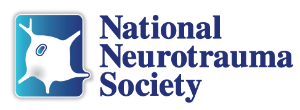Main Menu
Description & Objectives WS05
WS05: Connecting TBI Animal Models to Human Disease: 
Biomedical Relevance






Chair: Ramon Diaz-Arrastia, PhD
WS05.01 – Rotational Head Injury in a Gyrencephalic Large Animal Model
Susan Margulies, PhD – University of Pennsylvania
WS05.02 –Closed Head Impact Model of Engineered Rotational Acceleration (CHIMERA): Biomechanics and Pathology
Cheryl Wellington, PhD – University of British Columbia
WS05.03 -Mechanisms of TBI: Neuropathology and Computational Analysis of Blast and Impact Neurotrauma
Lee Goldstein, PhD – Boston University
Session Description
The failure of multiple clinical trials of therapies that have efficacy in widely used preclinical models has forced a re-thinking of the approach to drug development in TBI. TBI in humans primarily results from rapid acceleration and rotation of the head, resulting in stretching and shearing injuries to axons, neurons, glia, and vasculature, without deformation of the skull, conditions that are not reproduced in most animal models. This workshop will review the recent development of biomechanically relevant closed-head injury animal models which reproduce the major neuropathologies of human TBI. Dr. Susan Margulies from the University of Pennsylvania will discuss her work with a non-impact head rotation model in pigs, gyrencephalic animals whose brains more closely resemble humans than do rodent models. While this model reproduces most features of human diffuse axonal injury (DAI), the specialized equipment required and the expense related to working with large animals limits its use in experimental TBI. Dr. Cheryl Wellington from the University of British Columbia will discuss her work with an impact acceleration rotational acceleration model in mice. This model reproduces most of the biomechanical features measured in the pig model, albeit in a smaller schizencephalic brain, and results in multifocal axonal injury in particular white matter tracts. Finally, Dr. Lee Goldstein from Boston University will discuss his recent work with murine blast and momentum transfer rotational acceleration models, which do not involve skull deformation. Each presenter will review the biomechanical aspects of their models, as well as relevant neuropathology and neuroimaging findings.
Learning Objectives
At the conclusion of this session, attendees will be able to:
1. Discuss the advantages and limitations of currently available preclinical TBI models
2. Understand the biomechanical issues that are relevant in human TBI and how they can be reproduced in preclinical models
3. Discuss the neuropathologic findings in preclinical models and how they mimic human TBI
4. Understand how preclinical models can be used to develop and validate prognostic and predictive biomarkers of TBI which can be used in early phase human clinical trials
